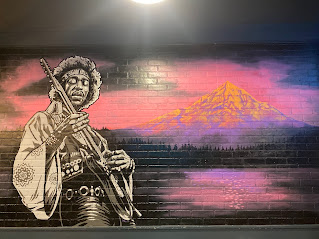Developed by Michal Halliday and Gunther Kress, Social Semiotics examine how signs and symbols function in our society to create and convey meaning. This field explores a variety of communication modes such as images, text, gestures and emphasizes the role of perceived social context in interpreting these signs. The way various elements- such as symbolism, color, and image placement- are composed can greatly affect how the viewer perceives the image. Color can convey a wide range of emotions, moods, cultural significance. Bright colors are associated with energy, positivity, excitement while dark colors resemble seriousness, somberness and often times negativity. Image placement also plays a role in how we give meaning to things. The top of image often represents ideals, aspirations, and what is imagined while the bottom of an image is associate with reality, facts, and what is known. The left of an image suggests what is known and given information while the right of an image suggests new, unknown information.
Tuesday, June 3, 2025
~ Social Semiotics ~
I took this photo of a Jimi Hendrix mural at Killer Burger in Lake Oswego, Oregon. In this mural, the left-side placement of the iconic guitarist suggests he is the “Given” element—familiar and culturally significant—while the glowing Mount Hood and lake on the right represents the “New,” symbolizing inspiration or transcendence. The contrast of monochrome like colors for Hendrix versus the vivid purples and oranges of the mountain and sky implies a symbolic bridge between grounded human creativity and spiritual or natural elevation. The use of these stark colors evokes both emotional depth and a dreamlike quality, likely displaying harmony between cultural legacy and natural beauty.
In the 2024-2025 NBA regular season, Chicago Bulls player Josh Giddey hits a half court shot at the final buzzer to beat LeBron James (pictured) and the Los Angeles Lakers. This image symbolizes triumph and dominance, particularly through the gesture and expression of Giddey, whose raised arm and confident posture signify victory and personal achievement. The use of bold colors—black and red for Chicago and yellow and purple for the Lakers—enhances the visual contrast and reinforces team identities, while the scoreboard reading “0.0” and the crowd’s celebratory reaction signifies a game-winning shot. The central placement of the victorious Giddey, with the defeated opposing player in James, slightly behind and lower in the picture, creates a power dynamic that guides the viewer’s interpretation toward celebration and defeat.
Subscribe to:
Post Comments (Atom)
~ Social Semiotics ~
Developed by Michal Halliday and Gunther Kress, Social Semiotics examine how signs and symbols function in our society to create and convey ...

-
Damon Silberstein Psychology Honolulu, HI and Las Vegas, NV Portland, OR PST First Comm. class Email; Social Media (Facebook/Instagram) in t...
-
The "Drake Curse" in Ultimate Fighting Championship (UFC) betting is a great example of the False Cause fallacy. There has been w...
-
Is there an ideal number of “friends” or connections individuals have on Facebook that can improve their mental health? Under section 2.1.2...




No comments:
Post a Comment